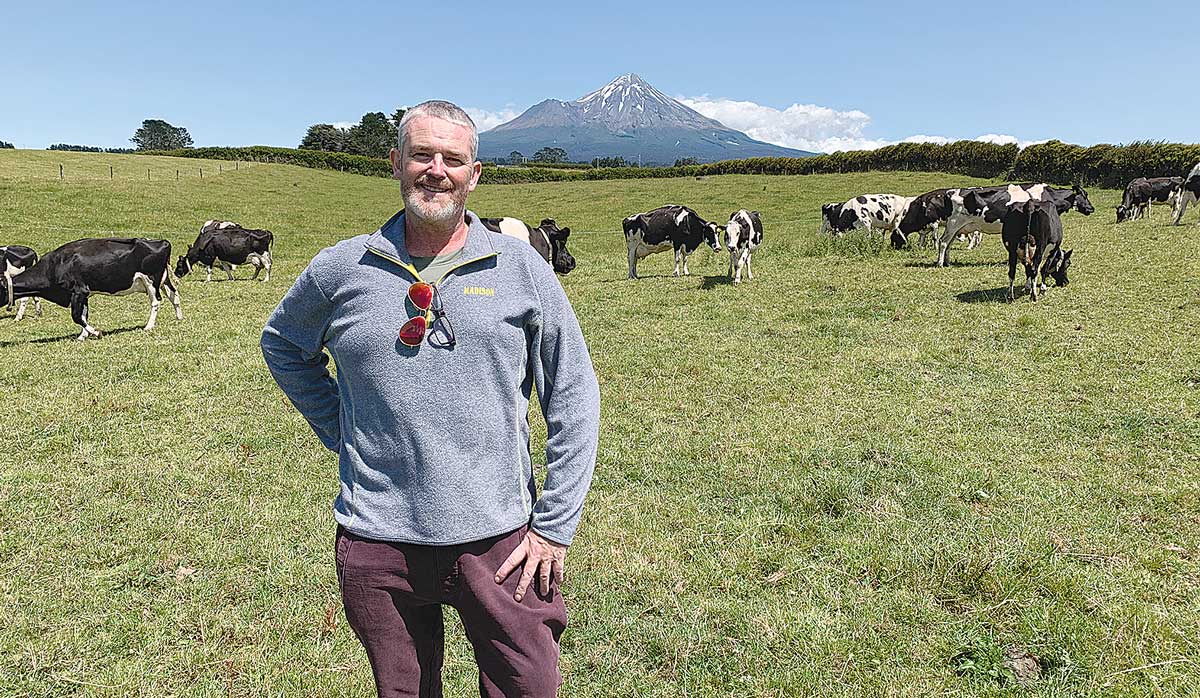Taranaki economy shifts from oil and gas to dairy as leading export
The Taranaki region is enjoying one of the highest gross domestic product (GDP) per capita figures in New Zealand, thanks to high farmgate dairy prices.
A Taranaki farmer’s 40-year commitment to breeding Holstein Friesians is set to come to an emotional end.
Ian McCormack, who’s battling a terminal illness, has decided to sell his herd at a complete dispersal sale in April.
About 180 head of mixed aged cows, in-calf heifers and calves will go under the hammer on his Stratford dairy farm.
“It’s quite emotional,” said Ian. “But the time has come for me to move on.”
“Holsteins Friesians have been my life. My herd can be traced back to the original animals imported into New Zealand.”
“It’s been my passion to maintain the purity of the breed. You won’t find too many herds left like that,” he said.
Ian milks about 120 cows on his rolling 54-hectare (effective) farm on Opunake Road. The herd produced 68,000 kgMS in 2018-19. It was one of the highest producing fat herds, of registered Holstein Friesians, in the country.
His top cow, Bushview Braxton Hazel VG89, produced 12,525 litres or 828kgMS last season.
Bushview Holsteins was founded in 1980, when Ian and his brother Gerald were herd-owning sharemilkers on their parents’ Rowan Road farm.
 |
|---|
|
Ian McCormack on his Stratford dairy farm. |
“The stud really kicked off in 1988 with the purchase of a heifer named Snowline Poppy,” he said.
“She was from the well-known Snowline ‘P’ family, which traces back to the cow Egmontdowns OG Peggy.”
Poppy had six daughters, five were reared as replacement heifers.
“A number of her descendants are still in the herd and have all classified as very good (VG) or excellent (EX) for traits other than production,” he said.
Bushview Windbrok Picture VG89, who’s a six-year-old, produced 712 kgMS last season. Bushview Braxton Petal VG88, a five-year-old, produced 701 kgMS.
Ian bought his current farm in 2005.
A major focus of his breeding has been cow families, production and type. He strives for a well-balanced cow with longevity.
Ian’s used mainly North American genetics from World Wide Sires, Semex and Genetic Enterprises.
“You’ll see I have a few old cows in the herd that don’t look their age. They look young. I don’t think I’ve done too badly,” he said.
Bushview Holsteins currently has 17 cows classified as excellent.
“I bought my first cows from that family when Nouveau Holsteins in Dargaville and Chrislerae Holsteins in Palmerston North held dispersal sales,” he said.
The Push-Up Challenge, an event which combines mental health and fitness, is set to launch in New Zealand in 2026.
Last month's Agritechnica event led to a wide group of manufacturers celebrating successes when the 2026 Tractor of the Year Competition winners, selected by a panel of European journalists, were announced in Hanover Germany.
According to the latest Federated Farmers banking survey, farmers are more satisfied with their bank and less under pressure, however, the sector is well short of confidence levels seen last decade.
Farmer confidence has taken a slight dip according to the final Rabobank rural confidence survey for the year.
Former Agriculture Minister and Otaki farmer Nathan Guy has been appointed New Zealand’s Special Agricultural Trade Envoy (SATE).
Alliance Group has commissioned a new heat pump system at its Mataura processing plant in Southland.
President Donald Trump’s decision to impose tariffs on imports into the US is doing good things for global trade, according…
Seen a giant cheese roll rolling along Southland’s roads?